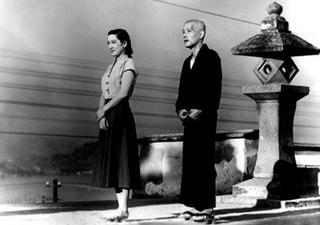the Story of Us
 An elderly couple from the town of Onomichi traveling to the contemporary city of Tokyo, to congregate with their children, to spend time with them in Tokyo. In return they are sidelined by the children, as they are busy with their selfishness or to say in a proverbial tone, the time demands them to be like this. Only their widowed daughter-in-law seems genuinely pleased to see them, takes a day off from her job and expends a day with the couple for sight seeing. The couple leaves Tokyo and the audience faces the fractured countenance of culture, tradition and generations, overruled by modernization and self-absorbed consumerism.
An elderly couple from the town of Onomichi traveling to the contemporary city of Tokyo, to congregate with their children, to spend time with them in Tokyo. In return they are sidelined by the children, as they are busy with their selfishness or to say in a proverbial tone, the time demands them to be like this. Only their widowed daughter-in-law seems genuinely pleased to see them, takes a day off from her job and expends a day with the couple for sight seeing. The couple leaves Tokyo and the audience faces the fractured countenance of culture, tradition and generations, overruled by modernization and self-absorbed consumerism.This is an effortless languidly paced yet poignant story of mankind. Nothing is spectacular but the film spreads its wings slowly in a quite customary grace, with its mundane dialogues, undemanding mannerism, and subtle gestures. Without any external mechanism Ozu creates an environment of the familiar family structure around the viewers. We Indians might find resemblance of this story with a zillion other Indian narrations, in movies, theatres or novels etc. but in Tokyo Story, nothing is overcooked, there is no peripheral catalyst to ask about or to show reasons for the dysfunctional family constitution.
As a typical Yasujiro Ozu endeavor, he breaks the laws of normal camera angles or movements. Except one shot (the camera follows a brick wall and moves to the evicted couple) the camera never in motion, stands immobile and edits short shots entering the characters in detail. As the conventional Japanese populace always sit on the ground (whether to talk or to eat or in customary works) Ozu uses a very low height for the camera.
Throughout the movie, there is a persistent motion of elements; the ships, the train, the bus or the younger generation, however the frames never move. Perhaps, Ozu wanted to demonstrate the gorgeousness of life still remain in simplicity or in slow going, but this is too demanding from today’s world which is over infested with fast eating consumerism or slow poisoning self pompous attitudes of us.
Tokyo monogatari (Tokyo Story - 1953)
Directed by Yasujiro Ozu


